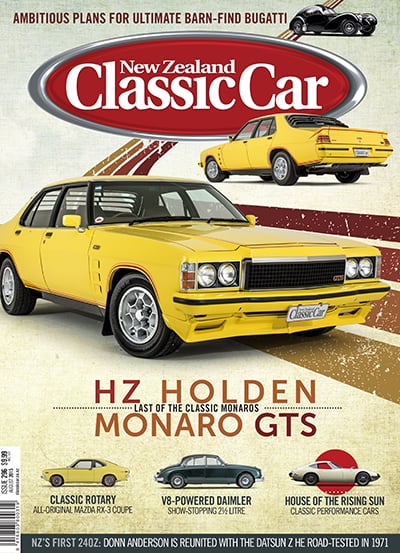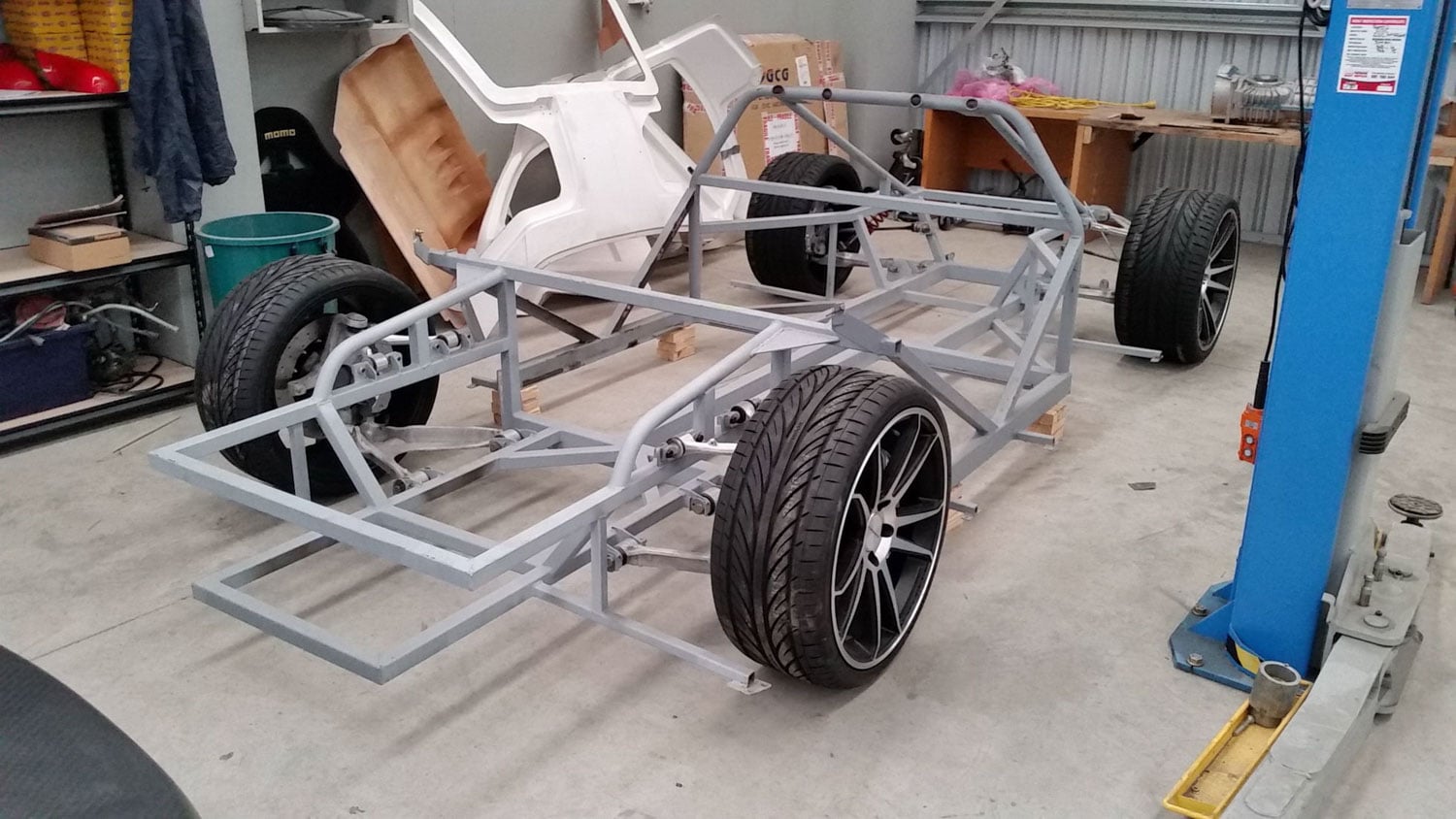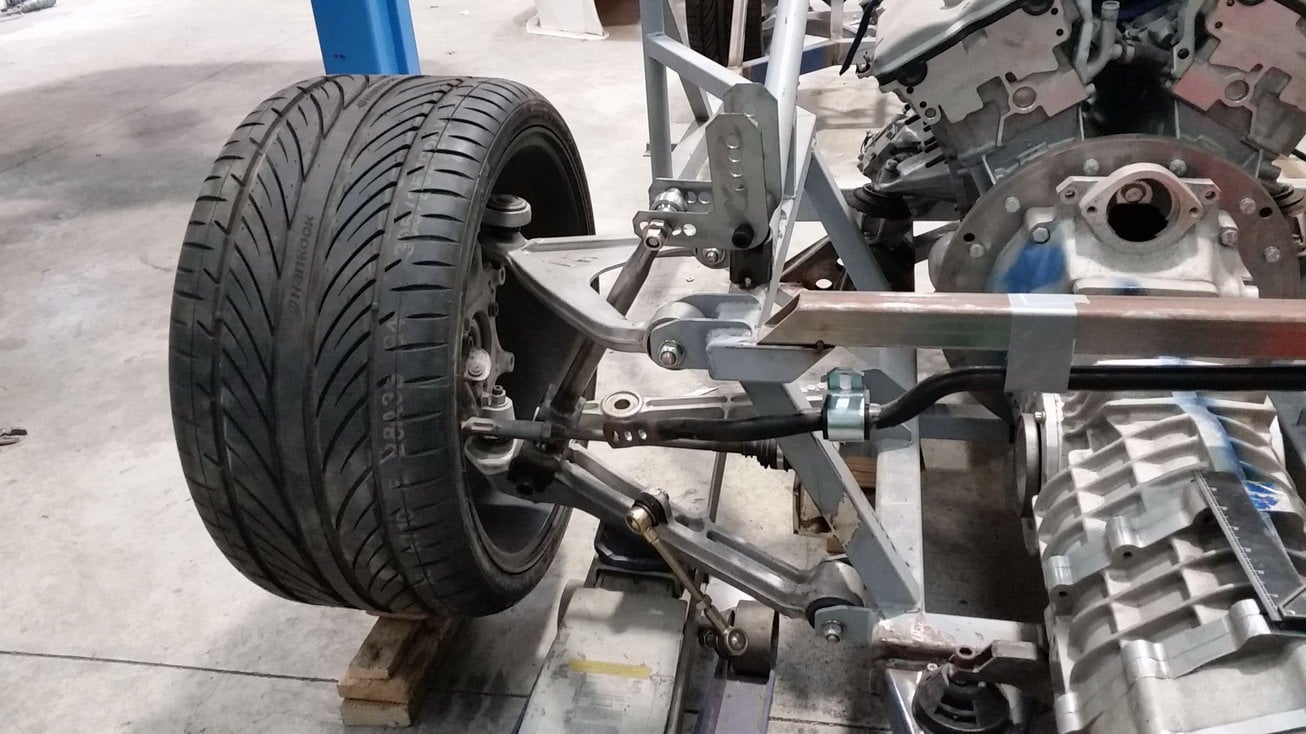data-animation-override>
“New Zealand Classic Car takes a peek at a handful of readers’ ongoing classic car restoration projects”
Home-grown supercar

When a couple of Wellingtonian mates, Fraser Simpson and Zac Haar, decided to build a one-off kit car they weren’t kidding and, after tossing around a few ideas, they hatched a rather ambitious plan.
The initial US-made kit car they chose is one that uses the McLaren F1 as a styling base – rather than a straight out replica. There are two engine options available for this kit, with four or eight cylinders, but Fraser decided that if the end result was going to look like a supercar, then it had to sound like a supercar. The next step was to search for a suitable engine, which lead them to a company in the US that sells crashed and damaged Lamborghinis — the initial plan being to use a Gallardo V10 and drivetrain. However, on reflection they decided that the end product would really be just a rebodied Gallardo.
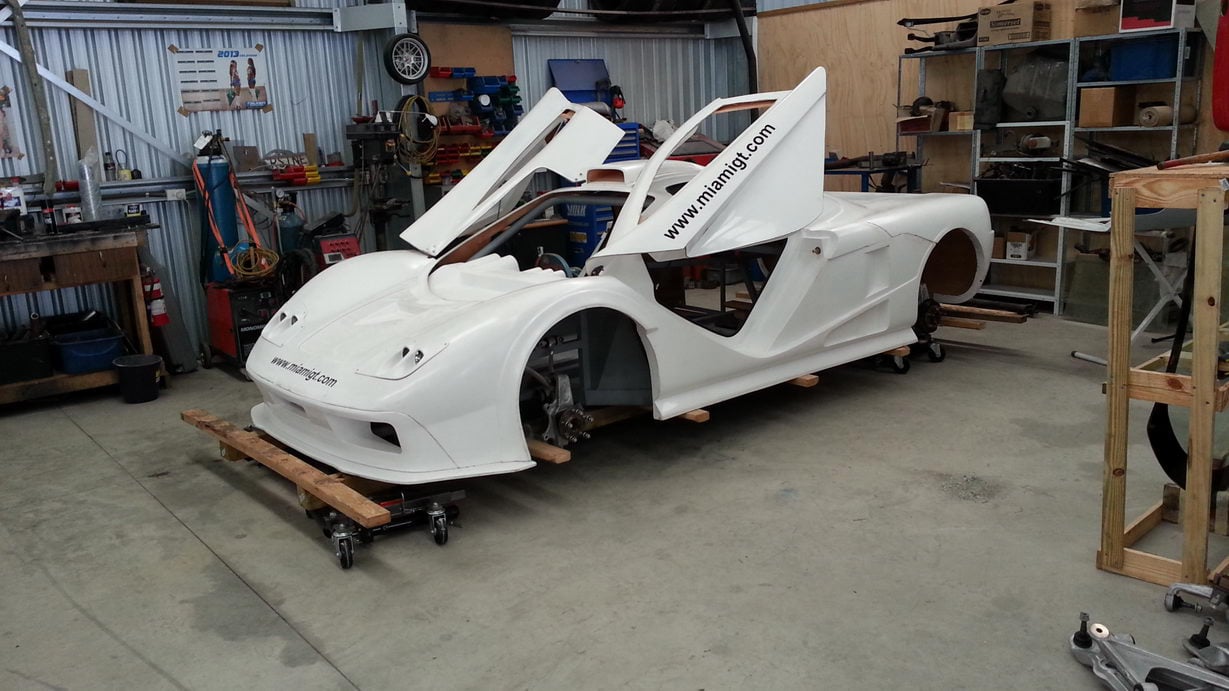
After considering a few other options they stumbled upon a early-model Pagani Zonda that had been crashed in Las Vegas, and after some slick negotiating, the Mercedes-Benz AMG 6.0-litre V12 engine was salvaged from the wreck and was soon New Zealand–bound.
The V12 engine will be hooked up to custom-made six-speed sequential transaxle being developed by Mendeola in the US, and it will be controlled via a Geartronics paddle-shift system from the UK.
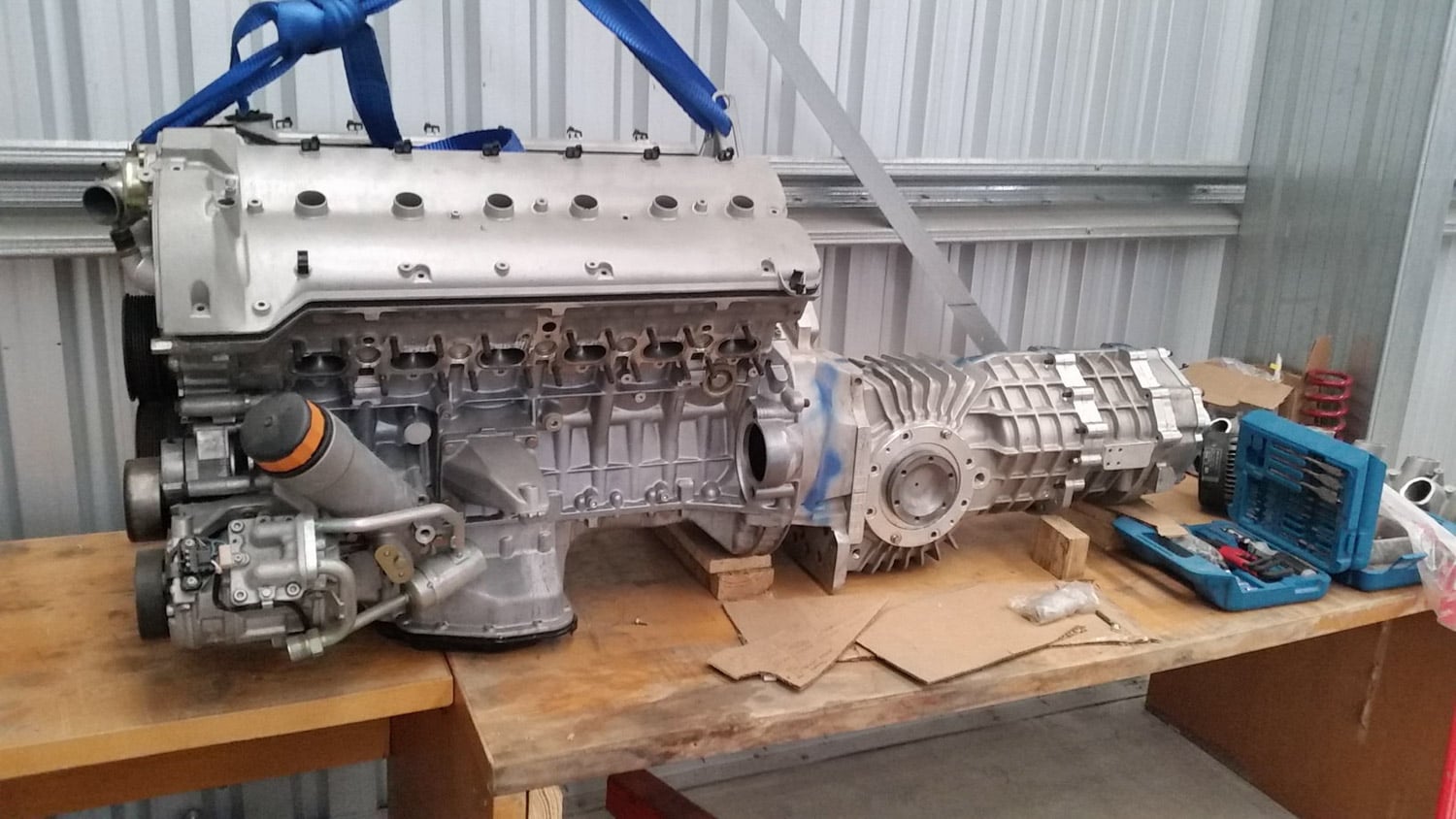
Zac will help to make a fully custom interior, and the intention is to end up with a heavily modified exterior to suit their own requirements.
Lots of other parts and details are well underway, including the suspension system, which is a world first and has been in development for three years. It’s a new active suspension system designed originally for the US military. The car will also feature fully integrated, active front and rear air-brakes as well as a custom touch-screen to control items such as the MOTEC M1 launch system, traction control, e-throttle maps and exhaust valve systems amongst other things.
Performance targets include achieving around 410kW and torque figures in the range of 65–750Nm, while keeping kerbweight down to around 1050–1100kg – that should put the FZ12’s power-to-weight ratio firmly into Bugatti Veyron territory.
Zac and Fraser have kept their project under wraps until now, but you can rest assured we’ll keep a close eye on this project, and look forward to bringing you updates as it progresses.
Tim’s Bradford

This vehicle was sold new to its first owner on September 14, 1950, and he retained the Bradford until January 1990, when he sold it to another Patea local with 51,021 miles (82,110km) on the clock. It was subsequently purchased by Tim Chadwick — a car enthusiast and regular contributor to NZ Classic Car — in January 1993, with 52,281 miles on the odo. Tim then used the Bradford until March 2006 when it failed its WOF for a number of small mechanical defects — including failing door hinges — most caused by rot in the car’s wooden A-pillars. After Tim’s tragic death in a car accident, the Brady passed to Tim’s dad Robin, and the current owner, John Wolf, purchased it from him in 2010.
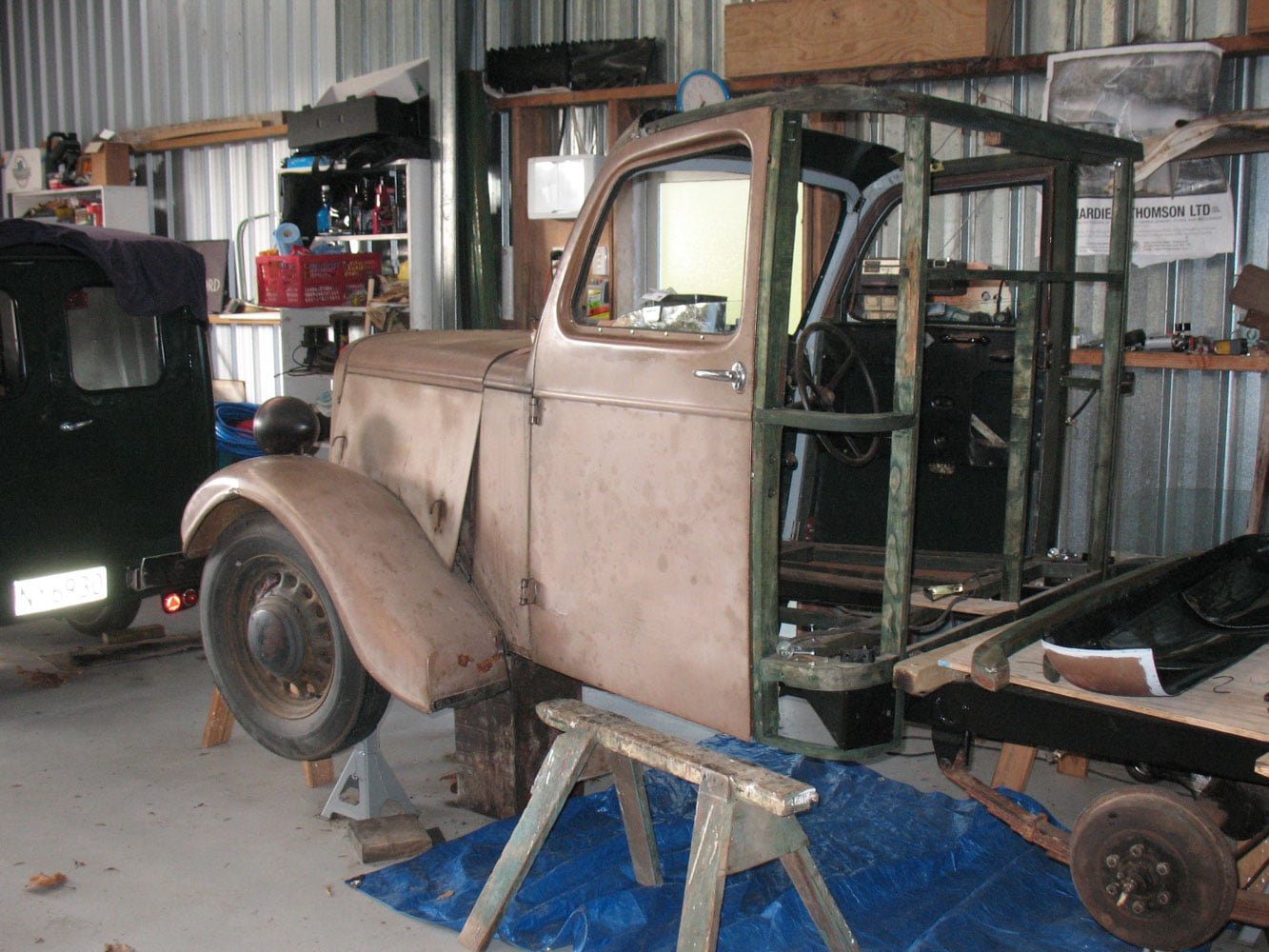
The Bradford remains in very original condition and John intends to keep it that way. Unfortunately, the rot in the A-pillars has spread to the cross members above and below the windscreen, the wooden floor, the B-pillars, and the framework at the rear of the cab. At the time of writing all the rotten wooden framework has been carefully replaced to the original design and pattern. The original panels will go back on soon, and John also has the original wooden deck that was built by Spragg and Sons Ltd, Hawera — this also needs a lot of work.
We look forward to seeing the Bradford being completed — especially with its strong connection to the magazine and the late Tim Chadwick.
Drophead gorgeous
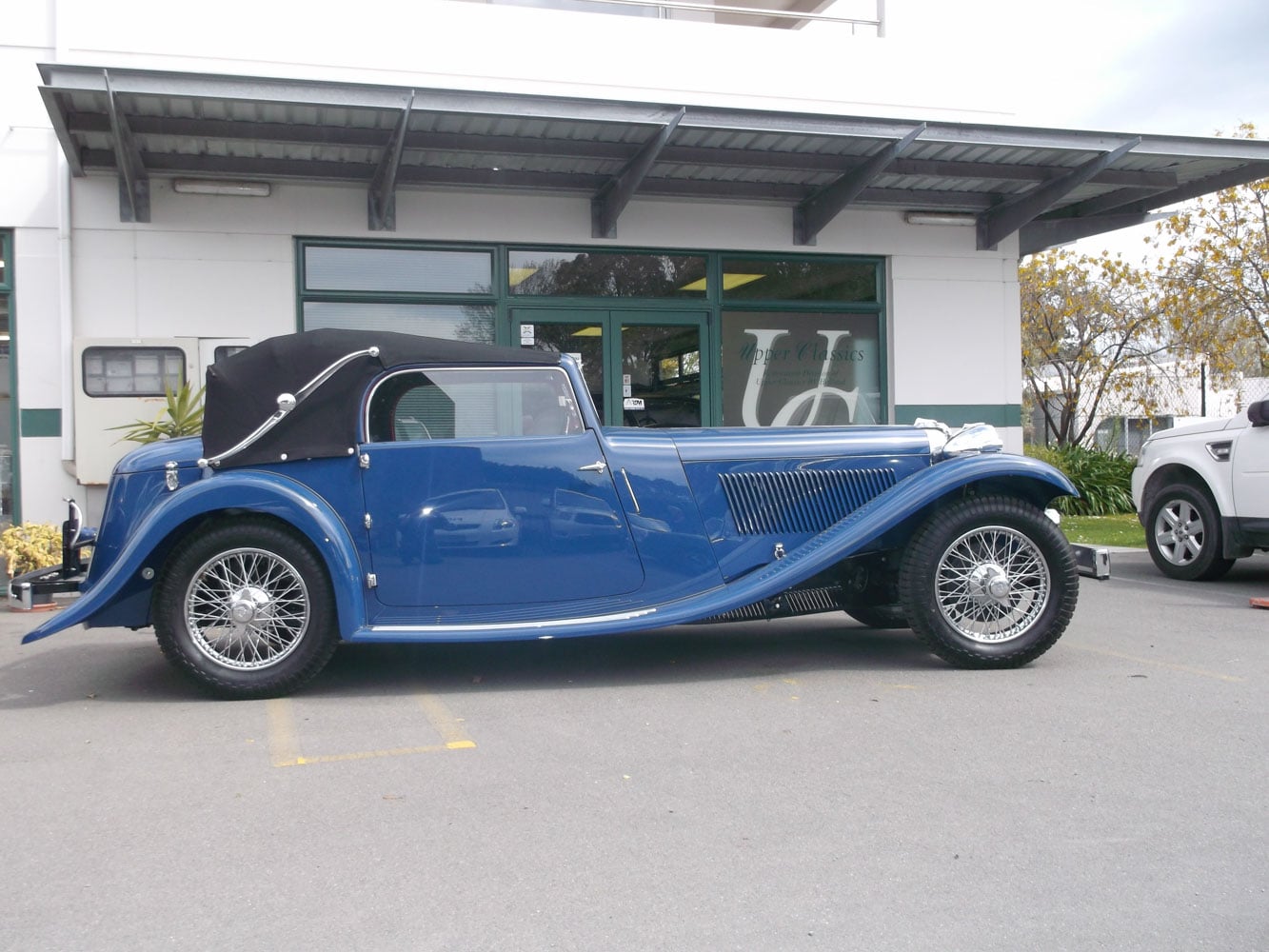
This rare 1935 SS1 drophead coupé has recently been restored by Upper Classics NZ for an overseas client. A new ash frame was made along with the majority of outer body panels. Many parts had to be cast and machined or made from scratch to replace missing or damaged parts. The convertible hood on this model folds down and is hidden by a metal cover, just like many modern convertibles, and must have been expensive to manufacture in its day.
This fabulous looking car is now cruising the streets of Europe.
If you’d like to let us in behind your garage door, send in a few pics and a brief description of your project to: [email protected].
This article was originally published in New Zealand Classic Car Issue No. 296. You can pick up a print copy or a digital copy of the magazine below:
